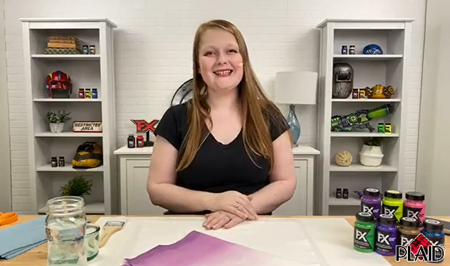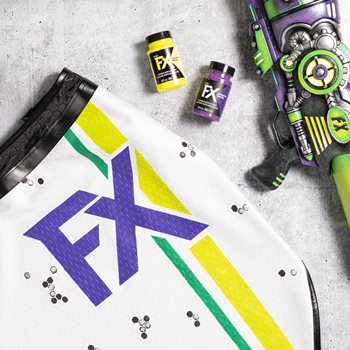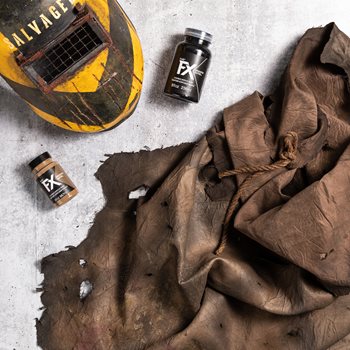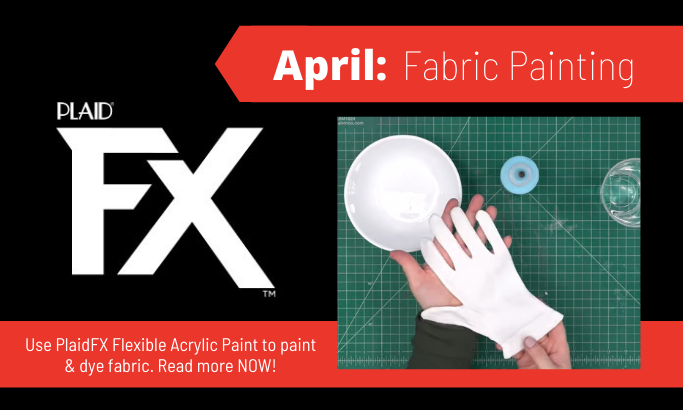
In April we are focusing on fabric painting with PlaidFX! We know you are going to love what we have in store.
To create some uniquely detailed and colorful builds you'll need some durable acrylic paint made by cosplayers, for cosplayers! Don't forget to pick up PlaidFX Flexible Acrylic Paint for all your fandom creations. We've got a color and a finish for every prop and costume. Click below to learn more!
TO START
April is all about fabric painting! And we are here to offer you tips and best practices as well as some unique projects to inspire. To begin, check out our intro video below to get a good foundation of what you need to know.We actually used this fabric dyeing technique on our Anime Girl build! Learn how we created this build and other fun builds in the video below.
First, here are some basic tips and tricks from our experts that you may be curious to know about when working with PlaidFX and fabric.
Prepping your Fabric
Before you begin painting on your piece, take the time to get rid of any wrinkles using an iron before working on your fabric project. Applying PlaidFX over a wrinkle will set it in place. When possible, always try to prewash fabric before painting. This helps strip away any residue left during manufacturing that prevents paint from adhering to the surface. Do not use fabric softener when pre-washing. This adds chemicals to the fabric instead of taking them away.
Before Painting
There are some extra supplies you may need before painting your fabric. Protect your surface by laying down parchment paper or kraft paper. Always have cardboard on hand to place underneath your fabric project. Paint can bleed from the backside and this will protect the underside of the project you are making and your work surface. And depending on the way you are going to be painting your project you may need paintbrushes, bowls, and squeeze bottles. You may also need sponges, stencils, or even an airbrush. Baby wipes are always great to have on hand when working with paint.
To Begin
Always have scraps of fabric handy to test your techniques on before starting on your final project. You can thin PlaidFX with a 1:1 ratio of water for working on fabric projects. Consider whether you want an opaque or transparent look to the PlaidFX. Extra water added to PlaidFX (5:1 ratio) creates a watercolor paint effect. For darker fabric colors you will need more paint to make the colors show up. It is okay to build up layers when adding paint onto the fabric. Work slow and gradually add pigment. Loosely woven fabric will reduce the intensity of the colors, whereas more finely woven fabric will work better to showcase finer paint details. To help colors blend, you can add water to the fabric before adding PlaidFX to help the colors flow together. Your fabric should be slightly wet, not soaked for this to work. When stenciling fabric, it works well to do so on a lightly padded surface. An old towel works well for this.
Post Painting
It is recommended to spot clean fabric projects when working with PlaidFX. Heat set PlaidFX onto fabric by using a blow dryer.
CRAFT BREAK LIVESTREAMS
Stay tuned this month on our PlaidFX Facebook Page as we do 2 Craft Break live streams with PlaidFX and Fabric. Follow us now!Our first Craft Break featured the technique of Ombre Dyeing with PlaidFX. Click below to watch.
Then, our second Craft Break is all about painting on lace. Click below to watch
Check back here after the Craft Breaks are over to view each video in this blog.
FUN TIPS, TRICKS, AND HOW-TOS
We have three fun fabric painting tutorials to get you inspired.First, we have this awesome piece showing you how to paint on spandex and faux leather.
- Apply PlaidFX Clear Primer to absorbent fabrics so you will need to use less coats of PlaidFX. PlaidFX Clear Primer is great for priming fabric because it is also flexible.
- On faux leather, use a soft brush with synthetic bristles to avoid brush strokes.
- Allow PlaidFX to dry to the touch between coats.
- Allow fabrics to cure fully before flexing, crinkling or wearing for maximum durability.
Then we have this fun fandom stenciled project to show you how to stencil on fabric. Click the photo below to get a supply list and instructions.
- Always make sure to protect your surface area when stenciling on fabric. This is because the paint can bleed onto the backside of your garment and you do not want this to get onto your surface.
- Using double-sided tape will ensure that your stencil do not shift or move when working.
- Use a stencil brush or a sponge to pounce paint over stencil. Do not brush paint on as this can cause the paint to seep under your stencil and will not result in a clean line.
- Heat set PlaidFX onto your fabric by lightly drying with a blow dryer.
- Offload paint onto a paper towel to make sure your paintbrush only has a little amount of paint on the bristles.
- Work slowly and gradually build up pigment, especially if working on a textured fabric.
- Allow to fully dry and then carefully remove stencil from fabric project.
- Touch up any areas with a detail brush and a paint color similar to your fabric color.
- Add fun details onto your project by repeating the stencil steps using masking tape where desired.
- A ruler is a big help in this to make sure that your lines are straight.
- Once your paint is dry, you can finish your project as normal.
- Spot clean with soap and water where needed.
And finally, we have this cape that we show you how to weather and distress for added texture and dimension. Click below to learn how to make.
- Try to start with a light or mid-tone fabric when possible because aging drastically darkens your project.
- To create a distressed edge to your fabric, gather the edge of your fabric and use scissors to cut a gagged edge.
- Using a serrated knife and sandpaper helps create holes and shred your fabric.
- The goal for this project is to not be perfect. You want to make the fabric look aged and distressed. Mistakes are okay and can help your project have character.
- Remember to wear gloves and protect your surface because this project can get messy!
- Watering down PlaidFX will help allow the paint to flow more smoothly on your fabric.
- Work in sections and around edges to deepen the aging look of your fabric.
- Add texture by using a sponge to create some interesting aged sections.
- Airbrushing can be a great tool here to add gradual transitions of color to your project.
- Watered down paint in a spray bottle is also a great option when wanting to add a staining effect.
- By using a toothbrush, you can add small specs to the surface that is too difficult to achieve by using a paintbrush.
Table Top DIY
Again this month we have the very talented Elizabeth Beckley doing a fun table top project! She is an award winning miniature painter and teacher. She has been working professionally in the hobby for almost ten years as a freelance studio artist for such companies as Panda Cult Games, Kingdom Death and CMON. Elizabeth has worked on many projects, including officially licensed properties from Marvel, Sony and Disney. She is one of the teachers from Miniature Monthly, a successful Patreon that offers a wide range of tutorials on painting and sculpting. Elizabeth enjoys traveling around the world to teach and attend conventions.
Make sure to check her out on social media:
- https://www.patreon.com/miniaturemonthly
- https://www.instagram.com/miniature_mistress/
- https://twitter.com/minimistres
This month learn how Elizabeth paints this awesome miniature figure. Watch to see how she adds highlights, shadows, and more with this amazing tutorial.
WHAT'S COMING UP...
Make sure to stay tuned for next month's theme where we talk about using PlaidFX and Mod Podge Resin!
Share your fabric creations with us using #PlaidFX!
Happy Crafting!



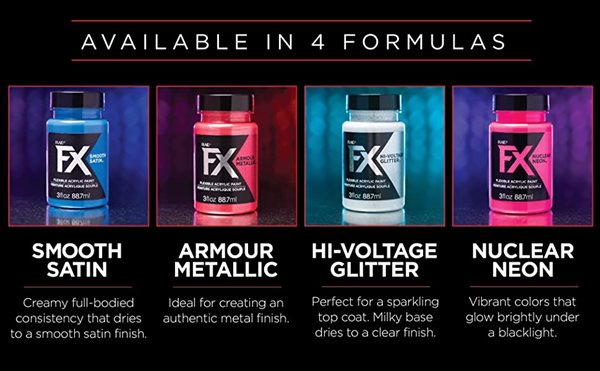
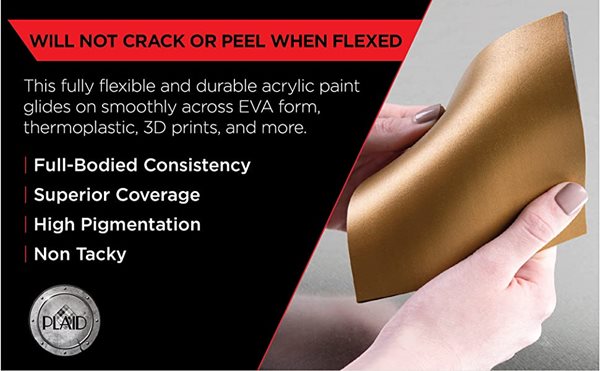
.PNG)
